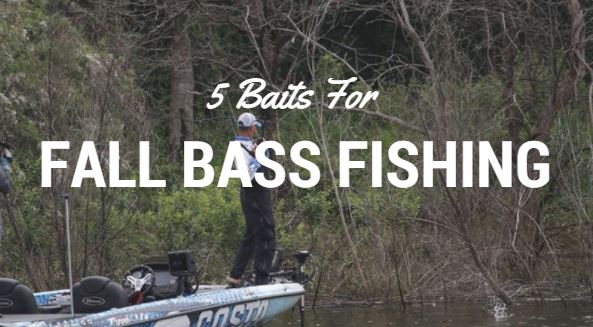
By Casey Ashley, Bassmaster.com.
It’s funny, while a lot of people are cleaning out their boats to reorganize their tackle for next year. Fall is actually a time when you want to make sure you keep a good selection of baits handy.
That’s because this can be a tough time of the year because the fish get scattered based on the progression of the seasonal change, particularly the water temperature. If you travel to different parts of the country, you never know what you’re going to face. But even at your lake home, you have to be prepared for a lot of fluctuation during the fall.
One thing that can complicate the seasonal progression is what some people call an Indian summer. That’s when warm weather stretches well into fall — like it has this year.
What that does is extend the season because water temperature determines everything in the fall. Warm conditions don’t actually stop the seasonal change; they just slow down the process. Overall, it’s the amount of daylight that cools the water because the sun doesn’t shine as long in the fall as it does in the summertime.
Because of how diverse the fall season can be, I like to keep myself ready for whatever I might face. Here’s what I’ll have on my deck.
1. Topwater: Until the water gets below 55, I love to throw a buzzbait to find those scattered fish. You can cover a lot of water with it, and it catches big fish.
2. Lipless bait: The fall fish like to school up on bait, and no matter where you go in the country, they like to get on flats out in the middle on isolated cover like stumps, brush piles, grass clumps. Whatever the lake has, the fish will be on a flat with a ditch running through it.
That’s where the bait goes because running water coming into the backs of the creeks brings oxygen and that’s what the bait’s looking for.
I like a shad pattern, white or chrome, and I like to match my bait size to the depth and the size of local baitfish. If it’s bigger bait or if the bait is deep, I’ll go with a Livingston Lures FlatSide 50, but if the bait is smaller and/or shallow, then the FlatSide 38 is my choice.
3. Spinnerbait: I use this in a similar application as the lipless bait but it’s a different style. When the fish are schooling on a flat, a lipless bait will get under them, but I can keep that spinnerbait up in the water column.
Fish love to feed up in the fall, but they may not want a topwater. With a 3/8- to a 1/2-ounce, depending on the water depth, you can keep that that spinnerbait high and you can even wake it when the situation calls for that.
I love a double willow leaf spinnerbait, but in the fall I always seem to do best with a No. 3 Colorado blade on the front and a No. 4 1/2 willow leaf on the back. I call that combination “bread and butter.”
Blade color depends on water clarity, but 90 percent of the time, I go with a silver Colorado blade and a gold willow leaf. If the water turns gin clear, I might go with two silver blades; but with this style of fishing, the water’s almost always colored because you’re in the backs of creeks where the water’s coming in.
The lake is turning over and it gets what I call that “winter brown” look to it — that chalky, tannic color. That’s why I chose the silver and gold combination.
4. Zoom Trick Worm: I’ll Texas rig this bait with a 3/16-ounce pegged weight and flip it on isolated cover like stumps and blowdowns. I like to mix up my colors with green pumpkin, Junebug and red bug, but I’ll also use a Merthiolate for an unweighted floating worm application to keep it higher in the water.
Either way, this is one of those scenarios when I absolutely depend on my Costa sunglasses to help me spot the smaller pieces of cover beneath the water. This technique works well later in the day when the fish hold tight to cover and want a smaller profile bait. They may not bite a jig, but you can go behind people and catch fish with that trick worm.
5. Flat-sided crankbait: This is actually what I’d call a wintertime bait, something that will run 6-7 feet deep with a tight wobble. I’ll use this in the late fall when the water temperature gets down into the 50s.
The fish are still keying on bait and they’ll suspend a lot in 5-8 feet. So, a Livingston Flatmaster SQ is a good bait to wind over isolated cover and also to catch fish out of the middle of a creek when they’re schooled up on bait, especially in the morning.
Overall, if I had to pick my favorite part of a fall day, it would have to be the first two hours after sunup. Whether it’s early fall or late fall, that’s when the fish get out there and roam around in the low light and you can really catch them fast.
What I throw depends on the time of the year. If it’s still warm, I’ll cover as much water as I can with the buzzbait or the spinnerbait. Once the water gets below 55, I’ll throw the lipless bait on the flats and if the fish are farther along in their seasonal pattern, that’s when I’ll throw that flat-sided crankbait.
When they have that bait bunched up early in the morning, you can catch them cast after cast.
Re-posted by Scott Freerksen “The Lake Guy”
